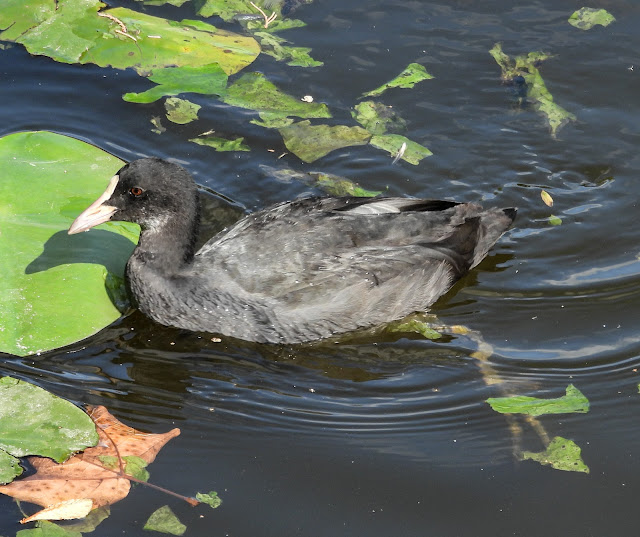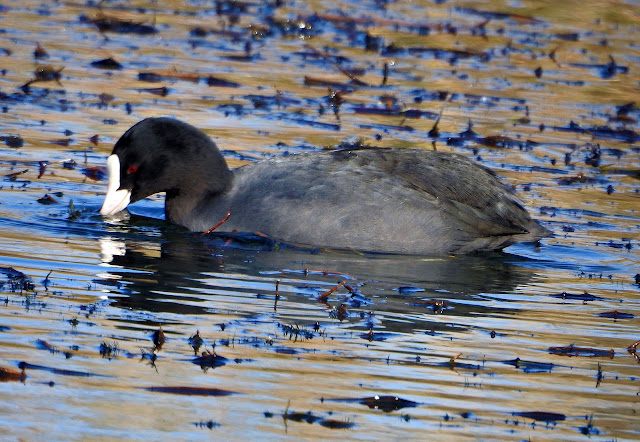The Eurasian coot, Fulica atra, also known as the common coot or Australian coot, is a distinctive waterbird with a slaty-black body, a glossy black head, and a striking white bill topped with a white frontal shield. This bird is a member of the Rallidae family, which includes rails and crakes. Both sexes exhibit similar plumage, making them indistinguishable in the field.
Adult Eurasian coots measure 36–38 cm in length with a wingspan of 70–80 cm. Males are slightly heavier than females, weighing around 890 g compared to the females' 750 g. The species is characterized by its white bill and frontal shield, which contrast sharply with its all-black body. Juveniles are paler with a whitish breast and lack the facial shield, which develops fully by one year of age.
The Eurasian coot is found on freshwater lakes and ponds and has adapted well to urban environments, often seen in city parks and gardens with water bodies.
This bird has a broad range across the Old World, including Europe, Asia, Australia, New Zealand, and parts of North Africa. It is a resident in milder regions but migrates south and west from much of Asia during winter.
The Eurasian coot is less secretive than many rails, often visible on open water or grasslands. It is territorial and aggressive during the breeding season, with both parents defending their territory. In non-breeding seasons, coots may form large flocks. They are reluctant flyers, preferring to run across water surfaces, and are known for bobbing their heads while swimming.



































